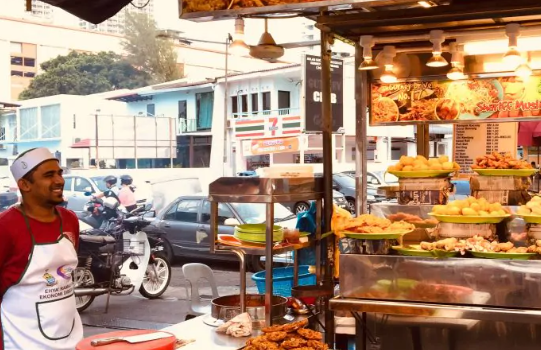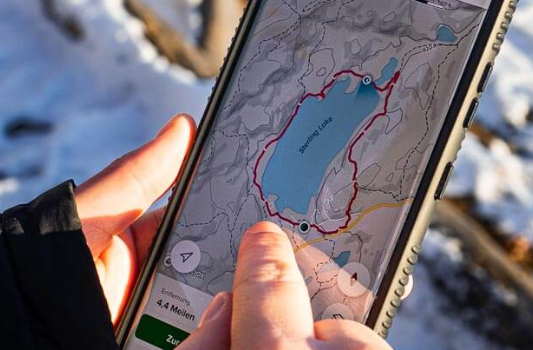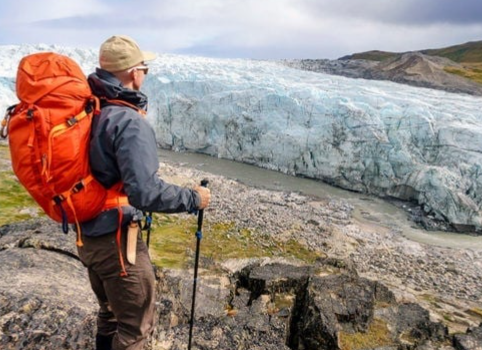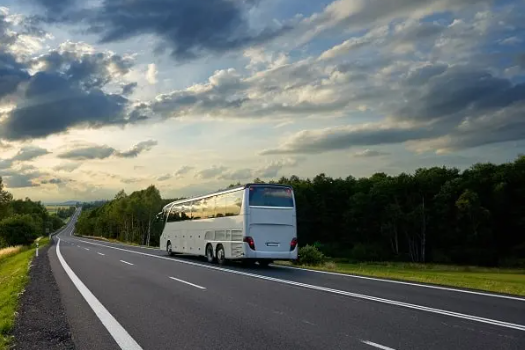
If you’re craving a connection with nature but want to avoid the hassle of traditional camping, glamping is the perfect solution. Combining the charm of the outdoors with the comforts of luxury, glamping allows you to immerse yourself in nature without sacrificing convenience. Malaysia, with its tropical landscapes and serene locations, offers a range of glamping experiences that will elevate your getaway. Whether you’re relaxing on a mountain top or by the beach, here are some of the best glamping spots in Malaysia for 2023.
1. Japamala Resort by Samadhi
Located in Lanting Village, Pahang, Japamala Resort is a secluded retreat surrounded by lush forests and clear blue waters. This eco-friendly resort is powered by solar energy and uses rainwater harvesting to ensure sustainability. With accommodations made from bamboo and recycled wood, Japamala is the ideal getaway for those looking for a romantic escape or a peaceful retreat from the city.
At Japamala, you can enjoy a variety of activities such as snorkeling, scuba diving, and jungle treks. For relaxation, the resort offers a spa and swimming pools. There are also boat excursions to explore nearby islands and scenic spots. The resort’s two restaurants offer diverse cuisines, with the Tamarind restaurant serving Thai, Chinese, and Malay dishes, while Batu offers Italian food by the beach.
Location: Lanting Village, Pahang
Key Features: Eco-friendly accommodations, water activities, jungle treks, spa, and restaurants
Transportation: Accessible via private car transfer from Mersing Jetty, Kuala Lumpur, or Singapore
2. Tadom Hill Resort
Set against the backdrop of stunning limestone hills and turquoise springs, Tadom Hill Resort in Selangor offers a unique glamping experience. Guests can choose between glamping tents or premium bamboo chalets. This resort embraces sustainability, using bamboo for all structures, and offers a variety of activities, including diving and swinging from a Tarzan swing.
Conveniently located just a 15-minute drive from Kuala Lumpur International Airport, Tadom Hill Resort is an excellent spot for those looking for a quick getaway from the city.
Location: Selangor, Malaysia
Key Features: Bamboo-based accommodations, diving, water swings, and Tarzan swing
Transportation: 15-minute drive from Kuala Lumpur International Airport
3. Sailor’s Rest Resort
Nestled in the Titiwangsa Mountain Range at 600 meters above sea level, Sailor’s Rest Resort offers a peaceful retreat in the heart of a tropical jungle. The resort provides various glamping options, including tents with queen-size beds, hotel-grade bedding, and private bathrooms with hot and cold showers.
In addition to glamping, Sailor’s Rest features a range of accommodations, including a houseboat, chalets, and a conference hall. The resort is ideal for families and groups looking to unwind in nature while enjoying the comforts of modern amenities.
Location: Titiwangsa Mountain Range, Malaysia
Key Features: Lush jungle surroundings, diverse accommodations, and private bathrooms
Transportation: Accessible by car from Kuala Lumpur
4. Gopeng Glamping Park
Gopeng Glamping Park is one of the most popular glamping destinations in West Malaysia, situated amidst beautiful hills, rivers, caves, and forests. This park offers a variety of accommodations, including tents, pods, and cabins, making it perfect for both family vacations and corporate retreats.
Guests can enjoy activities such as BBQ dinners, buffet meals, and a variety of outdoor adventures. Gopeng Glamping Park seamlessly combines luxury with nature, allowing visitors to stay connected to the great outdoors while enjoying all the comforts of a modern resort.
Location: Gopeng, Perak, Malaysia
Key Features: Tents, pods, cabins, BBQ dinners, and activities
Transportation: Easily accessible by car from Ipoh
5. Caravan Serai Exclusive Private Villas & Eco Resort
Located in Bentong, Pahang, Caravan Serai offers a luxurious glamping experience with tents equipped with modern amenities such as private bathrooms, showers, and fans. The resort features beautiful gardens, an inviting outdoor pool, and a banquet hall for special events.
Caravan Serai is located about two hours from Pahang and just 70 minutes from Kuala Lumpur, making it an ideal destination for those seeking a peaceful escape without venturing too far from the city.
Location: Bentong, Pahang
Key Features: Luxurious tents, outdoor pool, and banquet hall
Transportation: Two-hour drive from Pahang, 70-minute drive from Kuala Lumpur
6. Tiarasa Escapes Glamping Resort
Located at the base of Janda Baik Hill, Tiarasa Escapes is an award-winning glamping resort featuring safari-style villas and cozy tents. Each accommodation comes with modern amenities, including king-sized beds, Wi-Fi, and private bathrooms. Guests can also enjoy a crystal-clear river and panoramic views of lush greenery.
Tiarasa Escapes is dedicated to sustainability and integrates natural elements into its design, including the use of recycled wood. It’s only a 45-minute drive from Kuala Lumpur, making it a perfect weekend getaway.
Location: Janda Baik Hill, Malaysia
Key Features: Safari-style villas, private bathrooms, crystal-clear river, and sustainable design
Transportation: 45-minute drive from Kuala Lumpur
7. Sea Horizon Resort
Located in the fishing village of Sedili Besar, Johor, Sea Horizon Resort offers stunning cliffside views of the South China Sea. This resort is inspired by local culture and architecture, with unique glamping accommodations such as Stargazer Domes. Each dome offers unobstructed sea views, ensuring maximum privacy and relaxation.
Sea Horizon Resort is also known for its eco-friendly initiatives, such as repurposing fishing materials to create exhibits. It’s an ideal destination for families seeking both adventure and serenity.
Location: Sedili Besar, Johor, Malaysia
Key Features: Stargazer Domes, panoramic sea views, and repurposed fishing materials
Transportation: 1.5-hour drive from Senai International Airport
8. Cabana Retreat
Situated along Rampayan Beach in Kota Belud, Sabah, Cabana Retreat offers a peaceful beachfront experience with luxurious tents. The retreat is perfect for nature lovers and those looking for an outdoor adventure. You can enjoy activities such as a river cruise, fireflies tour, water sports, and ATV rides.
With a strong commitment to sustainability, Cabana Retreat uses eco-friendly practices while offering comfortable accommodations and excellent facilities, including a beautiful beach and in-room dining services.
Location: Kota Belud, Sabah, Malaysia
Key Features: Beachfront, river cruise, fireflies tour, and water sports
Transportation: Accessible by car from Kota Belud
9. Dusun Bonda
Dusun Bonda, located in Kampung Sungai Lembing, Pahang, offers a rustic, cozy glamping experience surrounded by a tropical orchard. The resort is perfect for families and nature lovers, with activities such as hiking, cooking classes, and river rafting. You can also relax in the hot springs or outdoor pool.
With its serene atmosphere and family-friendly amenities, Dusun Bonda is a hidden gem for those looking to reconnect with nature in a peaceful setting.
Location: Kampung Sungai Lembing, Pahang, Malaysia
Key Features: Traditional Malay houses, cooking classes, river rafting, and hiking trails
Transportation: Accessible by car from nearby towns
10. Rustcamps Glamping Resort
Nestled in the cool air of Genting Highlands, Rustcamps Glamping Resort offers a luxurious outdoor experience with all the comforts of home. Guests can enjoy glamping tents with Wi-Fi, hot tubs, and picnic equipment. The resort also offers nearby attractions such as the Genting Highlands Premium Outlets and Genting Skyworlds Theme Park.
Rustcamps is ideal for families and honeymooners alike, providing a balance of nature and comfort in a refreshing environment.
Location: Genting Highlands, Pahang, Malaysia
Key Features: Glamping tents, hot tubs, picnic equipment, and nearby attractions
Transportation: 90-minute drive from Kuala Lumpur
Conclusion
Malaysia is home to a wealth of glamping destinations, each offering unique experiences amidst the beauty of nature. Whether you’re seeking adventure, relaxation, or a family-friendly getaway, these glamping resorts provide the perfect blend of luxury and outdoor living. Pack your bags and get ready to discover the best of nature in style.




















Comments